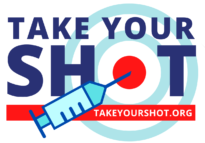
Pand-Ethics: For the Greater Good
“There is no higher religion than human service.
To work for the common good is the greatest creed.”
– Woodrow Wilson
By Dr. Kevin O’Neil

As a physician, my primary duty is to do what is right for my patient and to avoid harm. Doing what is right requires that I understand the wishes and goals of my patient and that I share with them the likelihood of benefit from any interventions I suggest, as well as the potential for side effects or adverse outcomes. Sometimes harm cannot be avoided, but it is important that a patient understands the potential for harm before consenting to treatment. For example, some cancers may require chemotherapy. Although chemotherapy may offer a cure or prolongation of life, it can be associated with serious side effects, such as anemia, hair loss, or even organ damage. This comes under an ethical principle called autonomy and informed consent. After education on the pros and cons of a decision, the patient has the inherent right of self-determination and can consent to or refuse a diagnostic evaluation or a treatment.
Do we always have the right to autonomy? The answer is no. Autonomy ceases when a decision means breaking the law or jeopardizing the public health and safety of others. A good example is the seat belt. Not wearing a seat belt risks the life of the driver, but others as well. The evidence that seat belts save lives is so strong that federal laws require all vehicles, except buses, to have seat belts and all states, except New Hampshire, have laws that require vehicle occupants to use them.
The COVID-19 pandemic has recently confronted us with ethically challenging decisions, what I refer to as “pand-ethics” (pandemic ethics). During a pandemic, the right to autonomy ceases. Do I still have a right to move around as I please? To not wear a face mask in public settings where I could be in close proximity to others? To visit a loved one in a senior living community? The answers should be obvious, yet some still argue that these directives impinge on their civil liberties. Our liberty to do as we please is sacrificed when such activities jeopardize the health and well-being of the rest of the population.
Because health professionals know the serious adverse consequences associated with COVID-19, we have to be leaders and model expected behaviors. The behaviors discussed here are practiced by public health leaders and nationally recognized infectious disease experts.
This virus is transmitted in one of two ways—direct contact and via respiratory droplets. Direct contact with the virus can be reduced or eliminated by meticulous hand hygiene—frequently washing the hands carefully for at least 20 seconds with soap and water or use of a hand sanitizer with at least 60% alcohol, avoiding handshaking, and disinfecting commonly touched surfaces with a disinfectant effective against the novel coronavirus.
Droplet transmission can be reduced with social distancing—staying at least 6 feet away from others. Use of a cloth face mask has been shown to reduce the risk of spreading your respiratory droplets and potentially infecting others, but it does not provide great protection for the wearer. Hopefully others in your environment are practicing social distancing, cough etiquette, and wearing a face mask. A medical grade surgical mask and N95 masks offer greater protection, but are in relatively short supply. These masks are necessary for healthcare professionals or those who may be providing direct care for someone who may have COVID-19 or who has respiratory symptoms (e.g., cough, runny nose, sneezing). Eye protection with a full-face eye shield or goggles can reduce risk of transmission though the eyes.
During these challenging times, we need to understand that this pandemic is not just about “ME”. It is about “US”. We are in this together, and we need to understand that “pand-ethics” reinforce our moral and social obligations to each other. For most of us, this virus will produce few or maybe even no symptoms, but for the most vulnerable among us—the elderly, persons who are homeless, those living in poverty, those with chronic medical conditions, and even very young children—it can be life-threatening or lead to lifelong complications. Until whatever time we have a vaccine or the majority of our population has immunity, let us be vigilant about the measures that our public health and infectious disease experts have shown to be effective.
Dr. Kevin W. O’Neil, MD, FACP, CMD, is the Chief Medical Officer for a network of more than 140 senior living communities in the Southeast United States.
